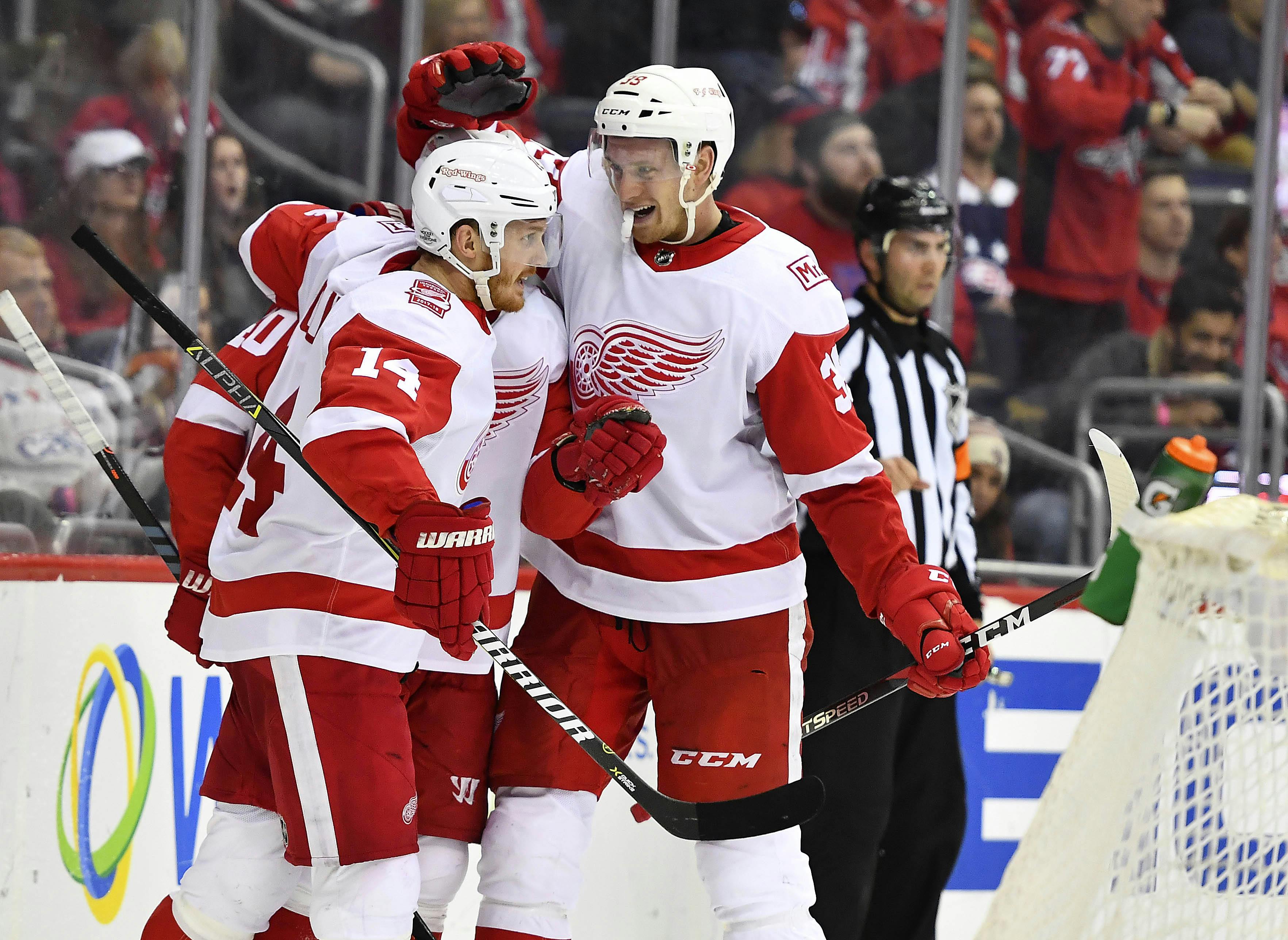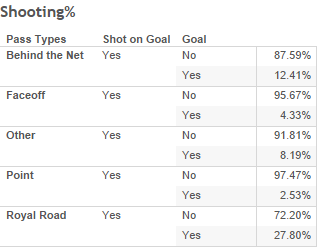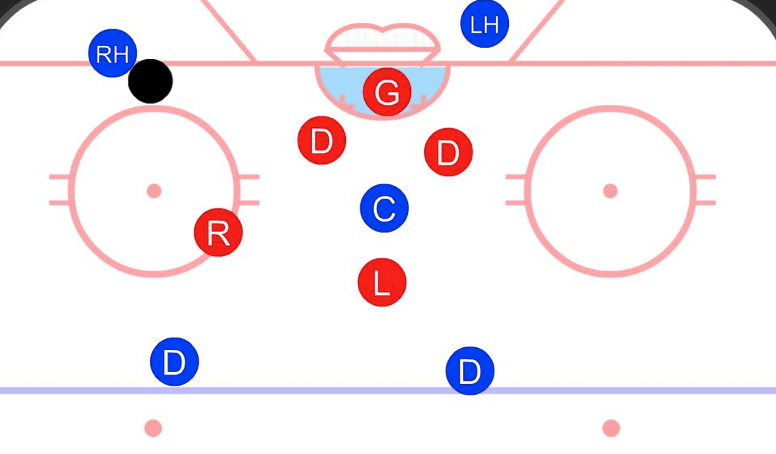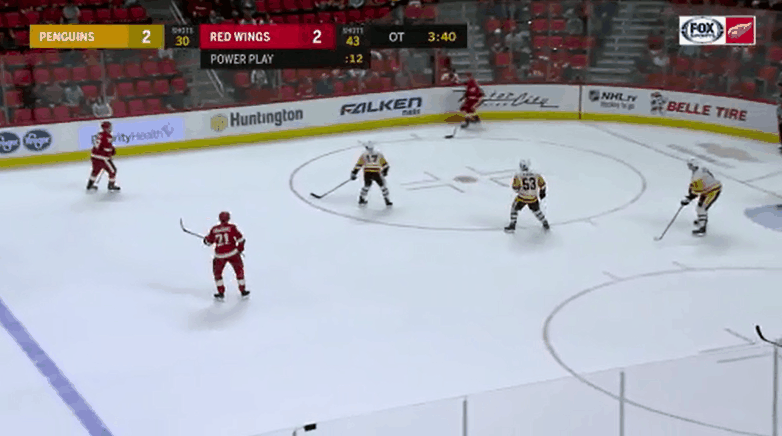Red Wings should utilize behind-the-net power play

By Tom Mitsos
5 years agoGoals haven’t been easy to come by for the Detroit Red Wings during the past few seasons, and that is especially true on the power play.

They haven’t had a power-play percentage above 20 since the 2014-15 season (23.81), their last season with Mike Babcock as coach.
Part of the problem has been zone entries, or lack thereof, but it’s also due to being too predictable and relying too much on outside shots.
The Red Wings deploy a typical 1-3-1 power-play formation, with a defenseman at the blue line running the power play, two players on each of the half boards, a player in the slot (also called a bumper) and a player in front of the net.
It’s one of the more popular formations in the NHL, and while a lot of teams have had success with this formation, the Red Wings haven’t seen that success under Jeff Blashill.
A formation that could lead to more goals for Blashill — and new assistant coach in charge of the power play Dan Bylsma — is a behind-the-net strategy.
The Athletic’s Ryan Stimson covered a behind-the-net strategy for The Coaches Site earlier this year. Stimson’s reasoning for using this style is simple: “Shots that are created from passes originating below the goal line have a significant relationship to future scoring.”
As you can see in the following chart from Stimson’s findings, shots immediately following behind-the-net passes result in goals 12.41 percent of the time, the second-highest mark behind royal road passes, which are passes that cross the center of the ice.

Ryan Stimson chart on behind-the-net power-play success.
With passes coming from below the goal line, goalies are constantly looking over their shoulder for the puck. It puts them in an awkward position, not only to make saves on shots near the post but to track the puck if there is a pass into the slot or out to the blue line.
Here is the default setup Stimson suggests.

Behind-the-net power play. (Courtesy Ryan Stimson)
As you can see, the two wingers are below the goal line, with the center in the slot available for quick one-timers, and two players at the blue line ready for passes from the wingers should the penalty killers get a little too aggressive defending the wingers.
As Stimson notes, this formation provides a lot of options for passes and shots, and if run at an efficient level, allows for the offense to rotate, opening up more options and keeping the penalty-killing team scrambling to defend all of the points of attack.
Good news for the Red Wings is they’ve already shown they can successfully execute it on a smaller scale.
During the overtime of their first preseason game against the Pittsburgh Penguins on Wednesday, the Red Wings utilized a behind-the-net strategy while they were on the power play. Granted, it was a 4-on-3 power play instead of a 5-on-4, but the same basic strategy remains.
Watch the Red Wings execute with Michael Rasmussen scoring the game-winning goal.

It starts with Rasmussen receiving a pass near the bottom of the circle and moving it to Dylan Larkin behind the net, as Pittsburgh’s Jamie Oleksiak gives chase. Larkin receives the pass, and two of the three Pittsburgh defenders are below the goal line. He opts to go behind the net back to Rasmussen, who has plenty of room to move it to the faceoff circle to Anthony Mantha, who then moves it to Dennis Cholowski on the opposite circle for a wide-open shot.
The Red Wings get a lucky bounce when the shot hits the post and bounces to Larkin, but Teddy Blueger’s overaggressiveness to stop Cholowski’s shot leaves the middle of the ice open, where Larkin hits Rasmussen for the easy tap-in.
Of course, this is preseason, and the Penguins likely won’t have this lineup during the regular season, but you can see how this power-play strategy neutralizes aggressive penalty kills and forces the goalie to constantly change position to track the puck.
As far as the lineups go, we could see something like:
Unit 1
Mantha-Larkin (below goal line)
Rasmussen (slot)
Nyquist-Green (blue line)
Unit 2
Bertuzzi-Vanek
Zadina
Athanasiou-Hronek
The Red Wings have a majority of left-handed players and having players on their off wing below the goal line in this formation certainly helps. But as Rasmussen showed in the above video, it’s not the end of the world if you have to have a left-hander on the left side.
The power play needs a jolt after a few lackluster years, and a new formation could be the answer to the Red Wings’ man-advantage woes.
Recent articles from Tom Mitsos





